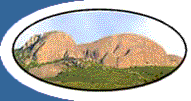Berg River in ‘fair to poor' state
2005-05-12
Engela Duvenage
HUMAN pollution is not the only threat to the Berg River - alien vegetation is also clogging this artery.
The foreign vegetation is a serious threat to the Berg River and should be cleared in the upper catchment, and indigenous plants re-established, according to the State-of-Rivers Report for the Berg River System.
The Report, which was launched during National Water Week, says alien flora such as hyacinths, as well as forestry, alien fish, river and flow modification, water abstraction and urban and agricultural development have severely changed the system.
Hippopotami are not the only creatures that have disappeared from the Berg River at the hands of humans over the past 350 years. The once prolific Berg-Breede River witvis, too, is no longer found along the 285km system and its sixteen tributaries.
Recent media reports have highlighted the desperate state, especially of the river sections around Paarl, focusing on the negative impact on the health of people, the water quality of the river, and the quality of agricultural products.
The 50-page report, part of the national River Health Project (RHP), takes an ecological look at the river, saying that only the upper catchment of the Vier-en-Twintig River tributary is “in an essentially natural state”.
The natural integrity of the rest of the system, with its indigenous plants and animals, ranges between fair and poor.
This is because of multiple disturbances associated with socio-economic development and exploitation, which has caused the loss of sensitive species and the dominance of tolerant or opportunistic species.
Various researchers, organisations and scientists - ranging from CapeNature, the Department of Water Affairs and Forestry, to the City of Cape Town, Stellenbosch University and the Water Research Commission - contributed to this report.
The biological and habitat integrity of the Berg and its tributaries was assessed by evaluating the condition of fish, aquatic invertebrates and riparian vegetation.
These indicators - and in many cases their mere absence from the system - highlight problem areas with unacceptable ecological
deterioration.
The report stresses the uniqueness of the conditions and aquatic animal life found in the Berg River, with some scientists proposing it should be a “living museum”.
The combination of winter rainfall, fynbos and the underlying geology has led to unique and specialised riverine animal life (of which many are found only in the Western Cape), particularly in the upper reaches around Franschhoek and the Drakenstein mountains, where the soils are acidic and low in minerals.
A new genus of hydroptillid caddisfly, thought to be a Gondwanaland relic, was recently recorded in the Berg River, while a very small, warty montane marsh frog endemic to the fynbos was also discovered.
According to this assessment, the water quality around Franschhoek, Paarl, and Wellington is in a poor state, with only the upper reaches of the Berg and its tributaries (the Boesmans, Wemmershoek, Franschhoek, Dwars, Vier-en-Twintig Rivers), in a natural state.
The water quality was measured based on the phosphate, nitrate, ammonia, suspended solids, dissolved oxygen, pH and conductivity measured in water samples taking from various sites.
Run-off has resulted in poor water quality and a loss of sensitive aquatic invertebrates such as stoneflies and mayflies.
The very high levels of water abstraction in the Dwars River cause reduced flow particularly during summer, leading to a concentration of pollutants which impacts river health.
In 1998, it was estimated that 11,5% of the Berg River catchment was infested by alien plants, of which Working for Water has since cleared “condensed areas”.
The severity of alien infestation around the Dwars, Krom and Hugo’s rivers by wattle, poplars, Spanish reed, river gum and longleaf wattle, have caused reduced river flow, incised channels and caused the instability of river banks.
With the removal of natural riparian vegetation, important habitat for riverine organisms has been lost.
The report suggests specific management interventions for the Paarl/Wellington area, to ensure the sustainability of the upper middle Berg River and its tributaries.
Alien vegetation should be cleared and indigenous vegetation re-established in the upper catchment and the riparian zone.
The control of the extensive eucalyptus stands lining the Berg near Paarl could increase its water flow considerably, as it is calculated that each mature plant can take up 250 litres of water per day.
A 10m buffer area with development is suggested next to the river, while environmentally acceptable farming practices are advocated.
For a copy of the report or the poster, contact Tony Belcher at the Department of Water Affairs and Forestry at 950-7100.
More
News
|


